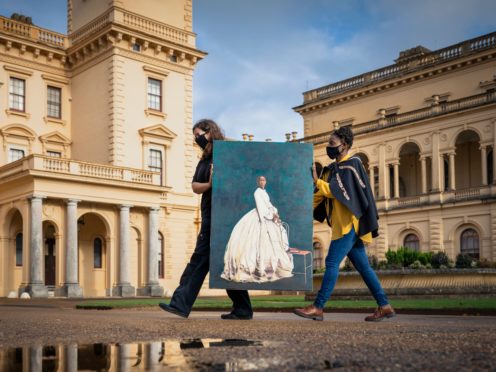English Heritage properties will reveal information about their connections to the slave trade from next year, the charity announced, as it put a painting of Queen Victoria’s African goddaughter on display.
The picture of Sarah Forbes Bonetta, the daughter of a West African ruler, is on show as part of a plan to feature portraits of “overlooked” black figures connected with English Heritage sites.
The charity has carried out in-depth research into the links between the slave trade and its numerous properties.
From next year, information at sites, such as its country houses, will bring that information “to the fore”.

Bonetta, who was orphaned and sold into slavery at the age of five, was presented as a “diplomatic gift” to Captain Frederick Forbes in 1850 and brought to England.
Captain Forbes had visited the King of Dahomey as a representative of Queen Victoria, on a mission to negotiate the suppression of slavery.
He named her Sarah Forbes Bonetta, partly after his ship, the HMS Bonetta.
Queen Victoria and Bonetta met several times after being introduced by the captain, including at Osborne, the monarch’s seaside home on the Isle of Wight, where the new portrait is now on display.

Queen Victoria became godmother to the seven-year-old, whom she described as “sharp and intelligent”, and paid for her education by missionaries in Kent and Freetown, Sierra Leone.
Bonetta, who became an accomplished musician and linguist, later named her first daughter after the Queen, who also became the child’s godmother.
English Heritage said it will commission portraits of other historical black figures associated with its historic sites “and whose stories, like Bonetta’s, have been previously overlooked”.
The move comes after the National Trust revealed that 93 of the properties it looks after, including Winston Churchill’s Kent home Chartwell, have links to historic slavery and colonialism.
Commons Leader Jacob Rees-Mogg later criticised the Trust for not realising “how wonderful” Churchill was.

Hannah Uzor’s painting of Bonetta – wearing her wedding dress – will be on show at Osborne House throughout October, Black History Month.
Uzor said Bonetta “challenges our assumptions about the status of black women in Victorian Britain”.
“To see Sarah return to Osborne, her godmother’s home, is very satisfying, and I hope my portrait will mean more people discover her story,” she said.
Portraits to go on display next year will include Rome’s African-born emperor Septimius Severus, who strengthened Hadrian’s Wall, and James Chappell, a 17th century servant at Kirby Hall in Northamptonshire, who saved the life of the country house’s owner, English Heritage said.
The charity said: “Black history is part of English history and, while we know we have more to do, English Heritage is committed to telling the story of England in full.”
Curatorial director Anna Eavis said: “There are a number of black figures from the past who have played significant roles at some of the historic sites in our care but their stories are not very well known.

“Starting with Sarah, our portraits project is one way we’re bringing these stories to life and sharing them with our visitors.”
Properties where visitors will find new information about connections to the slave trade will include Brodsworth Hall in South Yorkshire.
Its former owner, Peter Thellusson, was not a slave trader himself but invested in slavery-related commodities and land.
At Kenwood House in London, visitors will learn that rulings by former owner Lord Mansfield, as Lord Chief Justice, made a significant contribution along the road to abolition.
Bonetta married a Sierra Leone-born merchant, whose parents were liberated slaves, in Brighton in 1862.
She died in Madeira, aged just 37, after becoming sick with tuberculosis. Her daughter received the news while visiting the Queen at Osborne.
– The portrait of Sarah Forbes Bonetta by Hannah Uzor is on display at Osborne House on the Isle of Wight from Wednesday October 7.
